Symposia
Featured Research Symposium
WEDNESDAY, APRIL 26, 2023 | 2:30 PM - 4:20 PM
The Future of the Brain Initiative
Moderator: Xiangmin Xu | UC Irvine, USA
This featured research symposium will discuss recent advances in neuroscience as it relates to the Brain Initiative and the future of brain science. Dr. John Ngai, Director of the NIH Brain Initiative will the current state and future plans for the Brain Initiative and discuss opportunities and challenges for neuroscientists. Dr. Michelle Jones-London, Director of the NIH's Office of Programs to Enhance Neuroscience Diversity, will discuss broad experiences and perspectives on neuroscience training as it relates to the changing landscape of the field. Finally Dr. Xiaowei Zhuang, Howard Hughes Medical Institute Investigator and Professor at Harvard University, will discuss experiences and opportunities for technology transfer and commercialization related to neuroscience. The brief presentations will be followed by a moderated Q&A with the audience. The symposium will be moderated by Dr. Xiangmin Xu, Professor and Director of the Center for Neural Circuit Mapping at UC Irvine.

John Ngai
National Institutes of Health
USA

Michelle Jones-London
National Institutes of Health
USA

Xiaowei Zhuang
Harvard University
USA

Xiangmin Xu
UC Irvine
USA
Accepted Scientific Symposia
1.2.1. Memory consolidation during sleep in humans, rodents, and network models
Chair: Eitan Schechtman | UC Irvine, USA
During sleep, memories are thought to be reactivated, thereby shaping the neural traces supporting them. Different approaches have been used to study memory consolidation during sleep: animal studies have been instrumental in unraveling the neural mechanism involved in the reactivation of cells and networks supporting consolidation; human studies have provided critical demonstrations of the behavioral impact of sleep, and specifically memory reactivation; and computational modeling approaches have established the theoretical framework and provided testable predictions that are critical for our understanding of sleep's effect on memory. Linking these different approaches together is key to moving forward toward a unified theory explaining sleep's benefits to cognition. In this uniquely interdisciplinary symposium, we intend to make connections and build bridges between these distinct literatures, driven by our common goal of establishing a comprehensive account of sleep's impact on memory. The presented results rely on a wide array of methods, including molecular and cellular neuroscience in rodents, EEG and intracranial electrocorticography in humans, and computational models.
WEDNESDAY, APRIL 26, 2023
10:00 AM - 11:50 PM
Symposium Session 1.2

Shantanu Jadhav
Brandeis University
USA

Sara Aton
University of Michigan
USA

Maya Geva-Sagiv
UC Davis
USA

Michal Zochowski
University of Michigan
USA
1.2.2. Mechanisms and functions of clustered synaptic plasticity
Chair: Megha Sehgal | UC Los Angeles, USA
Spines found close together on a dendritic tree often form functional clusters, i.e., they are similarly tuned. Experience-dependent synaptic plasticity is localized within these clusters, but its functional role and mechanisms are poorly understood. In this symposium, Ben Scholl will discuss the structural and functional properties of the myriad inputs woven throughout neuronal dendritic trees. Using in vivo two-photon calcium imaging of dendritic spines, his work has uncovered the prevalence of small functional clusters of inputs and begun understanding their unique properties. Takaki Komiyama will discuss the principles of synaptic reorganization during motor learning. Learning induces synaptic reorganization, but the functional and spatial specificity of these learning-related synaptic changes is only beginning to be understood. Using a combination of longitudinal functional imaging and correlated post hoc electron microscopy, we will report the latest regarding the specificity of synaptic formation and elimination and how they modify dendritic representations. Megha Sehgal will talk about the role of clustered plasticity within dendrites in memory formation and organization. Events occurring close in time are often linked in memory but whether dendritic plasticity plays a role has been unclear. Using activity-dependent labeling and longitudinal one- and two-photon imaging of somatic and dendritic compartments, we demonstrate a causal role for clustered dendritic plasticity in memory integration such that linked memories are allocated to overlapping dendritic compartments. Kristen Harris will discuss evidence showing that recruitment of presynaptic vesicles to previously empty postsynaptic densities (nascent zones) can mediate the initial saturation of long term potentiation (LTP). With time, new nascent zones are added to the enlarged active zones of the synapses and the capacity for LTP recovers. The timing (hours) to recover LTP is consistent with the advantage of spaced over massed learning. The recruitment of neighboring dendritic spines in a cluster provides a mechanism to enhance further learning once the initially potentiated synapses reach maximal size.

Megha Sehgal
UC Los Angeles
USA

Takaki Komiyama
UC San Diego
USA

Benjamin Scholl
University of Pennsylvania
USA

Kristen Harris
University of Texas
USA
1.2.3. The fate of emotional memories after retrieval
Chair: Vanessa van Ast | University of Virginia, USA
Since long it has been known that stressful events have a privileged status in memory. In extreme cases, such emotional memories can become debilitating as for instance seen in post-traumatic stress disorder (PTSD). However, despite pressing need, little is known about the way emotional memories, once established in health or disease, can be modified upon retrieval, and then persist or falter. In this multidisciplinary symposium, we unite researchers from different memory disciplines, which allows for the synthesis of findings from fundamental, cognitive, and clinical fields. With this approach we aim to enable novel insights regarding the mechanisms and clinical implications of dynamics of emotional memories upon their retrieval. Dorst will commence by showing how a hippocampus-mediated memory can differentially drive fear-related behaviors in a manner contingent on environmental demands, and each behavior corresponds to its own unique brain state. Then Desmedt continues with the focus on the hippocampus, revealing that a deficit in hippocampus-dependent memory, namely contextual amnesia, can cause the development and persistence of PTSD-related hypermnesia. Promisingly however, trauma re-contextualization can normalize PTSD-like memory, promoting the expression of a long-lasting normal fear memory. Moving on from these fundamental observations in animals, the other speakers will focus on insights from human work. Van Ast reveals how separate episodic memories that overlap in content can impair or strengthen each other, depending on their unique encoding contexts as well as their valence. She further zooms in on autobiographical memory distortions in depression, and how these could be targets for treatment. To conclude from a clinical perspective, Engelhard will discuss work focusing on the way emotional memory can drive cognitive biases and anxiety. She will end the symposium by focusing on the mechanisms and effectiveness of clinical interventions that aim to modulate emotional memory.
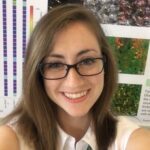
Kaitlyn Dorst
Boston University
USA

Aline Desmedt
Université de Bordeaux
France

Vanessa van Ast
University of Amsterdam
Netherlands

Iris Engelhard
Utrecht University
Netherlands
1.2.4. Robust hippocampal coding beyond allocentric space
Chair: Jon Rueckemann | University of Washington, USA
Hippocampal neurons robustly respond in a variety of tasks without an explicit spatial component indicating that the generalized function of the hippocampus must account for domains beyond navigation and allocentric space. The hippocampus organizes its firing around salient stimuli that demarcate the animal's task, while also bridging gaps between key events with reliable sequences of activity. Just as in navigation, neurons fire in a reliable order as the animal progresses towards its goal - with the aggregate activity across the network reflecting a topology of temporally-ordered experiences within the task. Speakers in this symposium will present recent work using electrophysiology and two-photon (2P) imaging spanning mice, rats, and monkeys, demonstrating complementary facets of hippocampal responses that illustrate its role in constructing an internal representation of task structure. The discussion will highlight shared findings across these varied approaches, building toward a unified perspective on the ontology of hippocampal responses. We will also emphasize key points of contention in the field and discuss experimental paradigms that can resolve the bottleneck. Norbert Fortin will present work characterizing hippocampal activity during sequences of discontiguous non-spatial events in rats, demonstrating a hippocampal code for the order of experiences at the behavioral and theta timescales. Mari Sosa will present two-photon hippocampal imaging in mice to examine how changes in reward conditions can alter spatial firing even in a constant spatial context. She will also discuss how the hippocampal representation of reward flexibly updates within and across environments as animals learn the task structure. Jon Rueckemann will characterize the activity of monkey hippocampal neurons in a virtual foraging task, demonstrating high specificity to different phases of the behavioral sequence leading to reward without modulation to position in allocentric space. Andre Fenton will critically evaluate two perspectives on spatially-tuned cells in the hippocampal formation: (1) neurons respond to external stimuli as if to represent them, or (2) neuronal activity is fundamentally internally-organized and instead actively fit to external features of the world.

Norbert Fortin
UC Irvine
USA

Mari Sosa
Stanford University
USA

Jon Rueckemann
University of Washington
USA
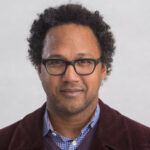
Andre Fenton
New York University
USA
1.2.5. Epigenetic mechanisms of memory across systems and circuits
Chair: Janine Kwapis | Pennsylvania State University, USA
Epigenetic mechanisms change how genes are expressed without affecting the DNA sequence, serving as an important interface between the environment and the genome. Epigenetics are capable of driving persistent neural changes to support a range of functions, including long-term memory, habit formation, and even immune system adaptations in the brain. Although it is clear that epigenetic mechanisms are powerful regulators of brain function, exactly how these modifications drive such diverse phenotypes across brain systems is unknown. In this symposium, we will shed light on the specific functions controlled by epigenetic mechanisms across the brain. First, Janine Kwapis will present evidence that the repressive histone deacetylase HDAC3 exerts circadian control over memory by regulating the clock gene Period1. Her work shows that diurnal regulation of Per1 modulates memory allocation across the day/night cycle. Next, Melissa Malvaez will present data showing that epigenetic mechanisms also function in the dorsal striatum, a key corticolimbic-motor interface, to regulate habit learning. Her work will provide new insight into how specific neuronal subtypes regulate habit acquisition. Annie Ciernia will then present work showing that epigenetic mechanisms also regulate "memory" for past immune events in microglia. She will show evidence that changes in histone acetylation at enhancers can regulate gene expression in microglia in response to past infections, persistently changing the response to subsequent immune challenges and possibly contributing to anxiety and depression endophenotypes. Finally, Matt Lattal will conclude the series with his recent work on the behavioral characterization of the persistent effects of an acute trauma on appetitive behaviors. He will then describe how targeting epigenetic mechanisms may reverse these long-term effects. Together these talks will provide new insight into the functional roles of different epigenetic mechanisms in regulating different types of memory across the brain.

Janine Kwapis
Pennsylvania State University
USA

Melissa Malvaez
UC Los Angeles
USA

Annie Ciernia
University of British Columbia
Canada

Matt Lattal
Oregon Health & Science University
USA
1.2.6. What's new in hippocampal area CA2?
Chair: Serena Dudek, National Institutes of Health, USA
Compelling evidence has recently established that hippocampal area CA2 is both molecularly and anatomically distinct from CA1 and CA3 and plays a critical role in social memory. In this symposium, the speakers will discuss the latest research on area CA2, covering topics on development and developmental disorders, spatial and social coding, and CA2's role in controlling epileptic activity. Speaker presentations are as follows. Chair Serena Dudek will introduce the symposium topic with a review of the unique cellular profile of CA2 pyramidal neurons, which results in a lack of typical LTP. Laura Colgin will then describe work on how CA2 place cells encode social stimuli in rats. Social behavior changes profoundly during postnatal development, so Elizabeth Gould will describe work in mice showing how CA2 plays a role in the formation of lasting memories of maternal caregivers. In addition, she will discuss the development of a specialized extracellular matrix, the perineuronal nets (PNNs), and how it is regulated by stress during early postnatal development. Amar Sahay will then describe studies on CA2 function in mice with a haplo-insufficient loss of function (LOF) mutation in the Dual specificity tyrosine-phosphorylation-regulated kinase Dyrk1a gene found in a syndromic autism spectrum disorder (ASD). He will present work showing that Dyrk1a in dentate granule cells dictates mossy fiber recruitment of inhibition in CA3 and CA2 to facilitate sociability. These studies show a novel approach to identify Dyrk1a synaptic substrates with the aim of restoring inhibition and social cognition in ASD. Finally, CA2 neurons are often resistant to cell loss in humans and experimental models of epilepsy, so Christos Lisgaras will be discussing the role of CA2 in social comorbidity in a mouse model for study of epilepsy. CA2 in these mice generates an abnormal pattern of electrical activity, which can be silenced in real-time using closed-loop optogenetics. He will discuss how CA2-specific manipulations affect social recognition memory in two animal models and how CA2 may be a clue to treatment of epilepsy. Together, the speakers will provide the audience with a taste of some of the exciting work now being performed on this previously under-appreciated part of the brain.

Laura Colgin
University of Texas, Austin
USA

Elizabeth Gould
Princeton University
USA

Amar Sahay
Harvard University
USA

Christos Lisgaras
New York University Langone Health
USA
THURSDAY, APRIL 27, 2023
2:30 PM - 4:20 PM
Symposium Session 2.5
2.5.1. Resetting memories when it matters most: The critical role of the locus coeruleus in memory encoding and updating
Chair: David Clewett | UC Los Angeles, USA
Despite its small size, the locus coeruleus (LC) has a remarkably strong and far-reaching influence over cognitive and memory processes. Among these core functions is the ability to coordinate flexible neural and behavioral responses to changes in the environment. It is thought that when salient or unexpected events occur, a surge in LC activity initiates a 'network reset' that reorganizes functional brain networks to prioritize processing new information. Until recently, however, little was known about how this LC-mediated reset signal influences memory representations in the brain and in behavior. This symposium will shed new light on how the LC adaptively encodes and updates memories over time. We will bring together cutting-edge, cross-species research demonstrating the importance of the locus coeruleus-norepinephrine system to healthy memory function. First, David Clewett will discuss how fluctuations in arousal and LC activity segment experiences into memorable episodes. Next, Kelly Durbin will present MRI evidence showing that lower structural integrity of the LC is associated with greater pattern completion in older adults. Stephanie Grella will then discuss how noradrenergic inputs to the hippocampus facilitate memory updating, and how inflexibility in these processes may contribute to stress-related memory disorders like PTSD. Finally, Gina Poe will present data showing that LC silences during sleep promote consolidation of hippocampus-dependent memories. She will also discuss how these moments help reset novelty encoding pathways to make room for future learning episodes. Talks will highlight the use of multimodal techniques, including fMRI, neuromelanin MRI, optogenetics, multiple single unit recordings, EEG, fiber photometry, and pupillometry to study LC effects on learning and memory. They will also showcase complex LC-memory interactions across different ages, species, sexes, and states of wakefulness.

David Clewett
UC Los Angeles
USA

Kelly Durbin
UC Los Angeles
USA

Stephanie Grella
Loyola University, Chicago
USA
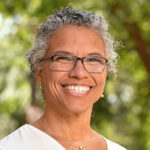
Gina Poe
UC Los Angeles
USA
2.5.2. Effects of aerobic exercise on age-related memory loss and Alzheimer's risk
Chair: Joshua Gills | Rutgers University, USA
While a growing body of data indicates that exercise is among the most effective lifestyle or behavioral interventions for reducing age-related memory loss and Alzheimer’s risk, we don’t yet know enough about “how” exercise alters the key circuits for memory and cognition that decline in aging and Alzheimer’s disease, “why” some people accrue more benefit than others from exercise, “where” in the brain these changes are most evident and functionally significant, and “which” types of exercise bring the most benefits. These four talks span a variety of methodological approaches to these questions. Judy Pa will present preliminary cognitive and fMRI findings from patients with early Mild Cognitive Impairment (MCI) who are participating in an ongoing multi-modal exercise study combining vigorous aerobic cycling and virtual reality-based spatial navigation. Studying the effects of physical activity and cardio-respiratory fitness on both spatial and non-spatial episodic memory, Michelle Voss will show how these relationships are mediated by hippocampal-cortical functional networks. From his work running a large multi-site 12-month randomized clinical trial of exercise in older cognitively normal adults, Kirk Erickson will discuss several levels of mechanisms and moderators of exercise on memory and brain health. Finally, Joshua Gills will share both cross-sectional and interventional data arguing that, in older African Americans, a SNP of the ABCA7 gene modulates the degree to which aerobic fitness promotes healthy functional connectivity in the medial temporal lobe (MTL) and reduced Alzheimer’s risk.

Judy Pa
UC San Diego
USA

Michelle Voss
University of Iowa
USA

Kirk Erickson
University of Pittsburgh
USA

Joshua Gills
Rutgers University
USA
2.5.3. How does cellular diversity in hippocampus and cortex support flexible computations?
Chair: Antonio Fernandez-Ruiz | Cornell University, USA
Recent work has highlighted that cell types previously considered rather homogeneous, such as hippocampal pyramidal cells, are indeed very diverse regarding their molecular, anatomical, and physiological characteristics. Experimental and theoretical work has suggested that biological and artificial neural networks composed of diverse elements constitute more efficient memory systems than similar networks integrated by homogeneous units. However, we are only starting to understand how cellular diversity contributes to the flexible computations that the hippocampus and associated cortical structures implement during navigation and memory-guided behavior. Speakers in this symposium will present recent research exploring the functional diversity within classical cell types using a variety of approaches across levels of biological organization, from synaptic to systems. Talks will explore the relationship between cell intrinsic properties and micro-circuit organization with the heterogenous functional correlates that hippocampal and cortical neurons display during behavior and different network states. We will discuss the evidence that parallel functional circuits implement complementary spatial and memory representations in support of flexible behavioral demands. Anatomically segregated hippocampal pyramidal cell subpopulations encode different types of task-related information and selectively broadcast them to distinct cortical target areas during synchronous network patterns known as sharp-wave ripples. Different interneuron subtypes form distinct local circuits with principal cells subpopulations, contributing to the formation and plastic reorganization of functional assemblies during learning. Neurons in cortical regions both up and downstream of the hippocampus form segregated parallel subcircuits with complementary functional specializations and memory functions. These results highlight the importance of incorporating cellular diversity in models of hippocampo-cortical learning and memory functions.

Attila Losonczy
Columbia University
USA
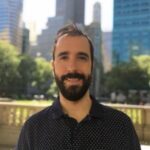
Antonio Fernandez-Ruiz
Cornell University
USA

Julija Krupic
University of Cambridge
United Kingdom

Ivan Soltesz
Stanford University
USA
2.5.4. Long-lasting behavioral and neural changes in drug addiction: Mechanistic insights from multiple classes of drugs of abuse
Chair: Ryan LaLumiere | University of Iowa, USA
Substance use disorder is often characterized as a dysfunctional form of learning and memory. Indeed, much evidence points to long-lasting changes in neural systems as a function of chronic drug use that, in turn, alter subsequent behaviors such as returning to drug use after periods of abstinence and even responses to novel classes of drugs. This panel will examine such alterations in rodents across different drugs of abuse, including cocaine, opioids, THC, and nicotine, to provide a cross-sectional understanding of critical underlying mechanisms. Ryan LaLumiere will discuss recent findings using cocaine self-administration in rats suggesting that infralimbic cortical projections to both the nucleus accumbens shell and amygdala are involved in extinction learning for cocaine seeking. Moreover, electrophysiological work indicates a negative relationship between infralimbic theta rhythm power and cocaine-seeking behavior. Christie Fowler will discuss her novel findings examining the role of endogenous allosteric modulators in cue-associated learning with drug self-administration in male and female mice. Her studies reveal a role for lynx proteins, which are negative allosteric modulators of the nicotinic acetylcholine receptors, in mediating nicotine reinforcement and nicotine-seeking behaviors. Maricela Martinez will discuss her work looking at the mechanisms by which adolescent THC exposure causes a long-lasting, sex-dependent pro-opioid phenotype in rats. Her evidence suggests that microglia in frontal cortex retain "memories" of such exposure even into adulthood and prime the system for pro-opioid responses to heroin exposure. Her work indicates that removing THC-exposed microglia in adulthood and replacing them with THC-naive cells appears to reverse the pro-opioid behavioral phenotype. Sade Spencer will describe research using rodent models of phytocannabinoid and synthetic cannabinoid use. She will detail cannabinoid-induced neuroadaptations in reward-related brain regions, particularly the nucleus accumbens, believed to be relevant for cannabinoid-seeking and relapse-like behavior.

Ryan LaLumiere
University of Iowa
USA

Christie Fowler
UC Irvine
USA

Maricela Martinez
UC Irvine
USA

Sade Spencer
University of Minnesota
USA
2.5.5. Deciphering the memory function of the sleeping brain
Chair: Monika Schönauer | University of Freiburg, Germany
Sleep's critical contribution to memory consolidation has been consistently demonstrated throughout the last century. Given several methodological constraints the precise functional mechanisms that promote memory formation during sleep, like memory reactivation or neural homeostasis, remain poorly understood. Furthermore, the majority of evidence stems from recordings in animal models, but it remains unclear if the identified key mechanisms are also applicable in the human brain. The recent emergence of experimental paradigms that can uniquely be employed in the human brain, along with multivariate analysis methods and access to direct brain recordings in humans, have proven powerful tools for deciphering sleep's role in memory formation. In this symposium, the speakers will present their latest approaches towards unravelling the mechanisms underlying the memory function of human sleep by applying diverse experimental strategies and cutting-edge analyses. Using both scalp and intracranial EEG recordings Thomas Schreiner will demonstrate that head direction related information enriches memory traces with spatial context, which is reactivated during non-REM sleep. Marit Petzka will talk about how non-REM sleep spindles enable memory consolidation by tracking learning-related patterns of brain activation. Monika Schönauer will depict evidence for the reactivation of previously learned naturalistic memory content in REM sleep and how memory processing at the neural level is related to dream experiences. Lastly, Randolph Helfrich will demonstrate that REM sleep enables neural homeostatic systems recalibration in support of information processing in the hippocampal-neocortical network. In particular, this talk will explore how cardinal sleep oscillations temporally segregate information transfer from consolidation. Taken together, the symposium will highlight the potential of experimental and analytical advances to understand the neural and phenomenological basis of memory consolidation. We will present evidence that these tools can become game changers in illuminating how the sleeping brain supports human memory formation.

Thomas Schreiner
Ludwig-Maximilians-University, Munich
Germany

Marit Petzka
Max Planck Institute for Human Development
Germany

Monika Schönauer
University of Freiburg
Germany

Randolph Helfrich
University Medical Center Tuebingen
Germany
2.5.6. Non-canonical neural circuits for emotional memory processes
Chair: Fabricio Do Monte | University of Texas Health Science Center at Houston, USA
Long-lasting emotional memories are at the core of many psychiatric disorders such as post-traumatic stress disorder, phobias, and substance abuse. Their acquisition and retrieval depend on the activation of a CANONICAL NEURAL NETWORK that connects the amygdala, the hippocampus and the prefrontal cortex. However, recent studies are showing that NON-CANONICAL PATHWAYS, including some (epi)thalamic circuits, are equally important for the encoding and retrieval of emotional memories. In this panel, we focus on the paraventricular thalamic nucleus (PVT) and the habenula, which have emerged as key structures in the recollection of emotionally-salient situations. Using genetic tools in mice, Tallie Z. Baram will show that exposure to adverse experiences during early-postnatal life, when hippocampal circuits and functions are not yet operational, activates specific neurons in the PVT. These same ensembles of PVT cells are later recruited to mediate the effects of early-life memories on adult behaviors, suggesting the existence of hippocampus-independent mechanisms for the formation of early-life emotional memories. Next, using multidisciplinary tools in rats exposed to a motivational conflict test, Fabricio Do Monte will show that PVT and the prelimbic cortex form a corticothalamic network that regulates threat- and reward-related memories to generate distinct patterns of behavior. Sheri Mizumori will then present data revealing that the lateral habenula plays a critical role in the integration and signaling of cognitive, motivational, and emotional information, particularly during situations that involve memory-guided choices and behavioral flexibility. Finally, Marcelo Wood will show how drugs of abuse induce drug-associated memories characterized by persistent changes in behavior related to relapse of drug-seeking, which are driven by epigenetic mechanisms in specific neurons of the medial habenula.

Tallie Z. Baram
UC Irvine
USA
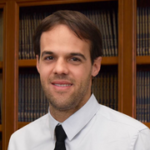
Fabricio Do Monte
The University of Texas Health Science Center at Houston
USA

Sheri Mizumori
University of Washington
USA

Marcelo Wood
UC Irvine
USA
FRIDAY, APRIL 28, 2023
2:30 PM - 4:20 PM
Symposium Session 3.5
3.5.1. Tracking the life history of RNAs in living animals during learning
Chair: Oswald Steward | UC Irvine, USA
There is broad consensus that learning involves transcription of mRNAs, transport to synaptic sites on dendrites and local translation. Critical details about the life history of RNAs during learning are missing however. Here we report progress toward filling this information gap using novel technologies of RNA biology. Sulagna Das will report recent studies using high resolution imaging of endogenous dendritic mRNAs with different half-lives tagged using MS2-PP7 stem loop technologies to define dynamics of their synaptic localization and translation upon stimulation. While constitutive, long-lived mRNAs like ß-actin persist in the dendrites and undergo multiple rounds of translation, transcripts with short half-lives like Arc are induced intermittently to supply proteins only in local dendritic hotspots that are maintained over time. The differential regulation of mRNAs in the dendritic space over time may be a mechanism for remodeling of particular spine synapses. Kyle Cole and Lila Paige Halbers will report initial development of new bioluminescent technologies to report steps in the life history of mRNAs in living brains. In bioluminescence, the enzyme luciferase operates on substrate luciferin to generate photons with no background, which can be repeatedly imaged over time in living animals. The team has engineered unique RNA sequences that recruit different parts of split bioluminescent molecules upon transcription and optimized this system to modularly tag and visualize RNAs in a variety of contexts. Halbers will describe development of engineered luciferase/luciferin pairs with improved thermal stability for imaging RNA transcripts and deployment of a ""split"" luciferase whereby fragments of the light-emitting enzyme produce photons only when bound to stem-loop structures in a transcript of interest. Cole will describe RNA hairpin design to optimize binding to target mRNAs and formation of functional luciferase enzyme from split fragments and validation with imaging. Os Steward will describe initial results deploying bioluminescent technology in living mice using AAVs that are transported retrogradely over long distances to remotely and selectively transduce cortical motoneurons involved in motor learning.

Sulagna Das
Albert Einstein College of Medicine
USA

Lila Halbers
UC Irvine
USA

Kyle Cole
UC Irvine
USA

Oswald Steward
UC Irvine
USA
3.5.2. Neurobiological markers of memory decline in human aging
Chair: Alireza Salami | Umeå University, Sweden
Multiple cognitive functions, such as memory undergo negative changes in old age. These changes may affect the well-being of older individuals and make independent living difficult. Due to population aging, the number of individuals with age-related cognitive impairments is expected to double over the next 50 years. Memory decline in old age thus comes with major individual as well as societal costs and developing means of preserving brain and memory functioning in old age is of great importance. However, current knowledge of the brain mechanisms underlying age-related cognitive decline is insufficient to inform the design of effective intervention programs. This symposium presents new data on the neurobiological correlates of memory aging in humans with a focus on innovative methodological approaches: from small-scale molecular imaging to population-based survey. In the first talk of this symposium, we highlight hybrid glucose PET-fMRI imaging as a new technology that provides us with a direct marker of synaptic activity during working memory, able to supplement and inform the interpretation of fMRI signal changes in the aging brain (talk 1, Anna Rieckmann). In the second part (talk 2 & 3, Alireza Salami and Saana Korkki), we move on to results from a larger population-based imaging study that combines molecular imaging of the dopamine system with fMRI and cognitive task performance to reveal dopamine receptor functions as a correlate of brain network organization and memory performance in aging. In the final talk (Yacila Deza-Lougovski), we present data from a population-based in-home survey in 20,000 individuals that attempts to identify how complex interactions between biomarkers from dried blood, social and health variables may shape memory performance in aging. We are a diverse, international group of researchers working at different Universities in Europe. Our common aim is to further the identification of specific molecular markers of cognitive aging that can provide viable targets for intervention. The symposium will be of interest to researchers working in the cognitive neurosciences of aging, but also to a wider audience interested in gaining a deeper insight into innovative methods to study neurobiological correlates of learning and memory.

Anna Rieckmann
Universität der Bundeswehr Munich
Germany

Alireza Salami
Umeå University
Sweden

Saana Korkki
Karolinska Institute
Sweden

Yacila Deza-Lougovski
Bundeswehr University Munich
Germany
3.5.3. Neurophysiological signatures and circuit-reorganization for remote memory consolidation
Chair: Thomas McHugh | Riken Center for Brain Science, Japan
How do we remember our daily episodes as days, weeks and years go by? For decades, researchers have attempted to identify the brain regions in which memories are formed and to follow memory-induced neuronal changes across time. It has been proposed that an episodic memory, initially formed in the hippocampus, is "transferred" to neocortical networks for permanent storage, a process termed the systems consolidation of memory. Importantly, the circuit reorganization underlying the consolidation is accompanied with the transformation of a detailed episodic memory to a gist-like or schematic semantic memory, which may be advantageous for the animal to configurationally store the information as more abstract knowledge. However, our understanding of the mechanisms involved is still limited. Specifically, little is known about the neural circuits, network activity and the dynamics of memory engram cells (i.e., the closest physical approximation of a memory trace) in these processes. In this symposium, we will focus on two major points; i) memory engrams, neural circuits and neurophysiological mechanisms for remote memory formation and recall and ii) neurophysiological signatures of memory transformation during consolidation. Takashi Kitamura will discuss the neural circuits and memory engram cells for remote memory formation in hippocampus and medial prefrontal cortex. Tom McHugh will demonstrate how memory consolidation alters the dynamic coupling of the prefrontal-hippocampal circuit and results in a physiological signature of memory age. Gisella Vetere will explain how thalamic inputs facilitate memory consolidation within the hippocampal-thalamus-prefrontal cortical circuit. Finally, Kaori Takehara-Nishiuchi will show how several coding properties of the medial prefrontal cortex support the construction and application of prior knowledge.

Kaori Takehara-Nishiuchi
University of Toronto
Canada
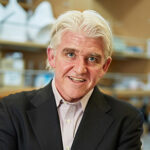
Thomas McHugh
Riken Center for Brain Science
Japan
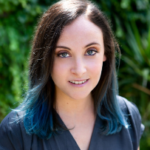
Gisella Vetere
The City of Paris Industrial Physics and Chemistry Higher Educational Institution
France

Takashi Kitamura
University of Texas Southwestern
USA
3.5.4. Cognitive training in the real world: a feasibility perspective
Chair: Anja Pahor | UC Riverside, USA and University of Maribor, Slovenia
One of the key questions in cognitive training is the extent to which regular cognitive exercise results in benefits that are consequential for daily life. While mechanistic questions are best addressed in the controlled environment of a laboratory, research assessing feasibility of cognitive training in "the real world" provides important information about the effectiveness of an intervention, and can help identify technological, logistical, and engagement constraints associated with the program. By bringing cognitive training to schools, hospitals, and retirement homes, or even to participants' homes via remote research, more diverse samples can be included, and the results can provide the basis for conducting further large-scale trials. The selected speakers have conducted innovative cognitive training feasibility studies in diverse populations, ranging from children with learning disabilities to older adults in rural or remote areas. Their presentations will prompt a discussion on the importance of using feasibility research methods in the quest to identify effective and easily accessible intervention protocols that have the potential to produce meaningful outcomes for diverse populations.
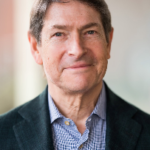
Peter E. Wais
UC San Francisco
USA

Angela Pasqualotto
NCCR Evolving Language
University of Geneva
Switzerland

Kevin Rosales
California State University San Bernadino
USA

Esteban Sebastian Lelo de Larrea-Mancera
UC Riverside
USA
3.5.5. Modes of memory development
Chair: Kim Nguyen | Temple University, USA
This symposium presents four innovative studies that capture interlinked programs of research on aspects of memory development, studied using both behavioral and neural methods. The first talk examines improvements in the ability to make connections between memories that support inferential reasoning and the underlying neural mechanisms. Children (7-12y) have a protracted age-related improvement in making connections among memories, with increased recruitment of frontoparietal regions with age when making these connections, suggesting more complex memory control processes in adulthood. Functional changes in the frontoparietal cortex likely play a key role in developmental gains. The second talk covers children's ability to segment a continuous narrative into discrete events. Although younger children (5-8y) have a stronger hippocampal (HC) response at the boundaries between events, teenagers (16-19y) are better able to model and predict upcoming events in cortex. This evidence supports the idea that while younger children are still working on encoding the specific episodes of their experiences, by adolescence, they can deploy their consolidated schematic knowledge about the structure of stories. The third talk elucidates the extent and nature of the interdependence between spatial and episodic memory. Behaviorally, spatial and episodic memory are related in children (8-13y) and adults. Neurally, spatial and episodic representations recruit the HC in both groups; however, there is variable coding across age groups and memory domains. Adult behavior is supported by HC lateralization that does not appear fully organized even into early adolescence. The fourth talk sheds light on atypical memory development and whether memory abilities in autism spectrum disorder (ASD) deviate from typical development, a hotly debated topic. In this ongoing study, the researchers are investigating group differences in relational binding abilities, particularly event features and event contexts, for ASD and typically developing youth.

Christine Coughlin
University of Texas
USA

Samantha Cohen
Temple University
USA

Kim Nguyen
Temple University
USA

Lindsey Mooney
UC Davis
USA
3.5.6. Understanding memory-related behaviors using formal models of sensory processing
Chair: Tyler Bonnen | Stanford University, USA
Behavior is informed by previous experience. This ability is made possible through a concert of interacting neural systems. Historically, the field has characterized these processes in isolation. Here we demonstrate and discuss how understanding memory-related behaviors benefits from formal models of sensory processing.The speakers in this symposium are psychologists and neuroscientists whose work integrates behavioral, neural, and computational methods in order to understand the function of multiple memory systems (e.g. frontal cortex in support of working memory; the medial temporal lobe in support of familiarity-based recognition). By parameterizing sensory processing, our research advances theories of memory - resolving decades of apparent inconsistencies in the literature, formalizing theoretical claims, and providing novel computational tools for experimental design and evaluation. Wilma Bainbridge will discuss how memory-related behaviors can be predicted using attributes that are intrinsic to visual stimuli, which items are to be remembered or forgotten. Tyler Bonnen will discuss how stimulus-computable proxies for the primate visual system can be used to formalize the interaction between perceptual and mnemonic systems. Tim Brady will focus on how characterizing perceptual similarity between items provides a parsimonious model of working memory, which accounts for decades of experimental results. Finally, Yudi Xie will discuss instantiating theories of working memory using modern deep learning tools enables prediction of human behaviors directly from experimental stimuli.

Wilma Bainbridge
University of Chicago
USA

Timothy Brady
UC San Diego
USA

Yudi Xie
Massachusetts Institute of Technology
USA

Tyler Bonnen
Stanford University
USA
SATURDAY, APRIL 29, 2023
8:00 AM - 9:50 AM
Symposium Session 4.1
4.1.1. RNA and memory: the second encounter
Chair: David Glanzman | UC Los Angeles
During the 1960s-70s there was significant interest among neuroscientists in the idea that RNA was central to memory encoding. Research into RNA and memory waned, however, due to lack of knowledge about non-coding RNA (ncRNA) and lack of molecular tools necessary to probe the potential roles of RNA in memory. But in recent years a new appreciation has emerged for the importance of RNA in memory, driven by an expanded understanding of the complex roles of ncRNA in the brain and the development of sophisticated molecular technologies for analyzing RNA's contribution to learning and memory. This symposium will present some of the new insights into RNA and memory. Coleen Murphy will describe how exposure to small RNAs isolated from a pathogenic bacterium can induce avoidance to the pathogen in the nematode, C. elegans, and in four subsequent generations of their progeny. RNA interference (RNAi) and PIWI-interacting RNA (piRNA) pathways are required, both for the learned avoidance of pathogenic bacteria and for the transgenerational inheritance of the avoidance memory. Hessam Akhlaghpour has recently published a highly original theoretical model of RNA-based computation and memory. He will present evidence that only a handful of simple RNA editing rules along with standard RNA transcription are sufficient to encode and compute any computable function with the same algorithmic complexity achievable by modern day computers. Sathya Puthanveettil will outline activity dependent regulation of lncRNAs and the multiple roles of these lncRNAs in structural plasticity and memory processes. Finally, Jason Shepherd will summarize his discovery that the protein encoded by the immediate early gene Arc forms virus-like capsids that can transfer RNA intercellularly via extracellular vesicles (EVs). These Arc capsid-containing EVs mediate long-term synaptic depression and represent a novel potential RNA-based intercellular communication system the brain.

Coleen Murphy
Princeton University
USA

Hessam Akhlaghpour
Rockefeller University
USA

Sathya Puthanveettill
Scripps University
USA

Jason Shepherd
University Utah
USA
4.1.2. Role of interneurons in learning and memory: relevance to psychiatric disorders
Chair: Barbara Sorg | Legacy Research Institute, USA
Dysfunction of inhibitory interneurons has been associated with several disorders, including schizophrenia, autism spectrum condition, substance use disorders, and cognitive dysfunction related to neurodevelopmental disorders, ageing, and Alzheimer’s disease. The goal of this symposium is to present the latest research that implicates interneurons in atypical circuit function and signal processing seen in neuropsychiatric disorders. Barbara Sorg will discuss the role of perineuronal nets, which wrap mainly around parvalbumin interneurons in the prefrontal cortex, in reducing relapse in an animal model of cocaine use disorder. She will present information on how manipulation of PNNs alters synchrony of oscillations between the prefrontal cortex and hippocampus during the expression of memory for cocaine cues. Atheir Abbas will discuss prefrontal interneuron dysfunction relevant to working memory deficits in schizophrenia. He will describe recent findings from optogenetic perturbations and recordings in working memory circuits in rodent models, which have allowed the delineation of subtype-specific roles of interneurons during working memory. Aarron Phensy dos Santos will discuss the importance of crosshemispheric gamma synchrony in the prefrontal cortex for cognitive flexibility. By using a combination of optogenetics and voltage imaging, he will demonstrate that synchrony in parvalbumin interneurons promotes exploratory behavior during rule shifts and proffers gamma synchrony to neighboring projection neurons in a cell- and task-dependent manner. Carlos Portera-Cailliau will discuss how differences in neuronal ensemble dynamics within cortical circuits might explain specific symptoms in neurodevelopmental disorders, such as atypical sensory processing, inattention, or learning disability. He will present data from in vivo two-photon calcium imaging studies that demonstrate how hypoactivity of parvalbumin interneurons is implicated in differences in sensory processing in the Fmr1 knockout mouse model of Fragile X Syndrome, the leading inherited cause of autism and intellectual disability.

Barbara Sorg
Legacy Research Institute
USA
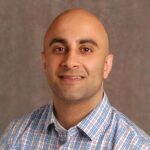
Atheir Abbas
Oregon Health & Science University
USA

Aarron Phensy dos Santos
UC San Francisco
USA

Carlos Portera-Cailliau
UC Los Angeles
USA
4.1.3. Neurobiological basis of reference frame coordination for spatial learning and memory
Chairs: Tia Donaldson and Ben Clark | University of New Mexico, USA
Guiding movements through space and establishing enduring memories based on such experiences is essential for the survival of all animals including humans. This ability is thought to require storage of memories often in an allocentric (map-like) framework and conversion to a body-centered reference frame comprised of specific locomotor actions (e.g., turn right). The overall goal of this symposium is to discuss emerging evidence that the neural mechanism of allocentric and egocentric frames of reference, and coordination across these systems, involves a broad network of cortical, subcortical, and hippocampal regions. Laure Rondi-Reig will discuss the impact of the cerebellum on the navigation circuits involved in egocentric contributions of spatial learning and memory. Jim Knierim will discuss entorhinal-hippocampal contributions to egocentric encoding for spatial learning and memory. Aaron Wilber will discuss parietal-hippocampal-anterior thalamic network contributions to reference frame coordination during learning to transform world centered memory into body-centered action. Finally, Eun Hye Park will discuss how place information in two simultaneous spatial coordinate frames is processed and coordinated across hippocampus and medial entorhinal cortex principal cells during navigation.

Laure Rondi-Reig
Sorbonne University
France

Jim Knierim
Johns Hopkins University
USA

Eun Hye Park
New York University
USA

Aaron Wilber
Florida State University
USA
4.1.4. The influence of threat on memory organization and transformation
Chair: Vishnu Murty | Temple University, USA
To avoid future punishments, it is adaptive to selectively enhance long-term memory for threat-related information. A large body of research has identified neural mechanisms underlying the prioritization of threat-related information, with the majority of human and animal work in this field characterizing how interactions amongst sub-cortical structures (e.g., amygdala-hippocampal interactions) modulate memory persistence. However, emerging research has shown that threat can influence memory beyond memory strength by transforming the organization of memory. Collectively, this symposium will characterize how threat influences the form and structure of memory in the domains of integration, distortion, and generalization. Further, we will highlight how threat-related memory reorganization necessitates the integration of cortical targets spanning the prefrontal cortex and ventral visual stream. Vishnu Murty will present data on how threat-related arousal changes the dynamics of free recall by prioritizing affective salience over temporal contexts. Joseph Dunsmoor will present neuroimaging findings from a sensory preconditioning protocol showing how emotional learning updates semantic networks and retroactively enhances episodic memory for categories of information indirectly linked to a future emotional learning experience. Regina Lapate will present findings highlighting mutual interactions of emotional and temporal coding processes-including the impact of negative events on temporal memory, and, at a different timescale, how changes in internal emotional states and temporal context jointly explain the similarity structure of functional connectivity patterns in distinct prefrontal and medial temporal regions. Johanna Jarcho will present evidence for mechanisms promoting recall bias for negative peer feedback in social anxiety across development.

Vishnu Murty
Temple University
USA

Joseph Dunsmoor
University of Texas
USA

Regina Lapate
UC Santa Barbara
USA

Johanna Jarcho
Temple University
USA
4.1.5. Novel Insights into the role of the hippocampus in motor memory
Chair: Genevieve Albouy | University of Utah, USA and KU Leuven, Belgium
Historically, memory in humans has been divided into anatomically and functionally distinct systems. However, there is increasing evidence that these memory systems recruit overlapping brain areas. For example, research from the different speakers of this symposium indicates that the hippocampus - a brain structure traditionally associated to declarative memory - plays a critical role in procedural memory. However, the functional significance of these hippocampal responses remains poorly understood. The goal of this symposium is therefore to shed light on the role of the hippocampus in procedural motor learning and memory consolidation over short (i.e., rest periods lasting several seconds between bouts of practice) and long timescales (i.e., hours between training sessions). Nina Dolfen will first present multivariate pattern analyses of fMRI data showing that the hippocampus binds movements to their temporal position during motor sequence learning (MSL). Next, Valeria Della Maggiore will discuss both functional (BOLD) and microstructural (diffusion MRI) data pointing to a role of the hippocampus in the reactivation and early consolidation of MSL. Ethan Buch will then present complementary source-localized MEG data showing that memory reactivation during MSL is likely to occur through fast hippocampal replay supporting rapid memory consolidation. Last, Genevieve Albouy will outline how hippocampal multivoxel fMRI patterns related to MSL persist over short and longer timescales during awake rest and how these patterns can be modulated by experimental interventions.

Nina Dolfen
Columbia University
USA

Valeria Della Maggiore
University of Buenos Aires
Argentina

Ethan Buch
National Institutes of Health
USA

Genevieve Albouy
University of Utah
USA
4.1.6. Entorhinal cortex dysfunction in Alzheimer's disease
Chair: Menno Witter | Norwegian University of Science and Technology, Norway
The entorhinal cortex is the brain region that exhibits the earliest histological alterations in Alzheimer's disease, including the formation of neurofibrillary tangles and cell death. Recently, brain imaging studies from preclinical AD patients as well as electrophysiological recording and molecular studies from AD animal models show that dysfunction of neuronal activities in the entorhinal cortex precedes these histological alterations, implying that activity dysfunction causes memory impairments in the initial stage of AD. This session will focus on recent findings on entorhinal cortex dysfunction, and discuss the potential pathways for the prevention of AD through protecting the entorhinal cortex from dysfunction.

Scott Small
Columbia University
USA

Marcia Bécu
Norwegian University of Science and Technology
Norway

Asgeir Kobro-Flatmoen
Norwegian University of Science and Technology
Norway

Kei Igarashi
UC Irvine
USA
SATURDAY, APRIL 29, 2023
2:30PM - 4:20 PM
Symposium Session 4.4
4.4.1. Developmental transitions in sleep states: implications for memory
Chair: Annalysa Lovos | University of Arizona, USA
Recent data suggest that sleep's structure during the day may reflect a complex set of factors, which may include the developmental state of the hippocampus. A series of four talks will examine behavioral and neural correlates of developmental sleep transitions, including how preschool nappers vs. non-nappers retain information across delays, how nap transition status relates to brain development, and how nap status and later sleep transitions are extended in developmental disorders of hippocampus, including Down syndrome. In the first talk, Rebecca Gómez will present findings which suggest that retention of new learning improves as children transition out of habitual naps between 3-5 years of age. She will present experiments probing the scope and limit of retention during the nap transition across short and long delays for simple and more complex learning that suggest a more nuanced picture. Tracy Riggins and Rebecca Spencer will present data showing that neural processing during naps impacts memory during early childhood. This finding has led to the hypothesis that the timeline of children's transition out of napping is a function of brain development. This talk will present data showing interrelations among brain (hippocampus in particular), sleep architecture and memory across the nap transition, which has important educational implications. Jamie Edgin will present data from individuals with Down syndrome, a developmental disorder of the hippocampus, which demonstrate that naps last years past the typical state of transition (8 years vs. 3-5 years) and the cognitive differences of late nappers will be described. Finally, Annalysa Lovos will turn our attention to later-age sleep transitions which have not yet been studied in relation to the hippocampus: the teenage-phase shift. In the teen years, the typical sleep profile changes with a phase shift to a later bedtime. However, not all children demonstrate the phase shift, as will be shown via sleep and circadian sleep-wake rhythms data for typically developing adolescents and adolescents with a developmental disability (Down syndrome) and interactions between these data, memory, and executive function. In total, this series of talks will highlight how sleep may be a window into the developing hippocampus.

Rebecca Gómez
University of Arizona
USA

Tracy Riggins
University of Maryland
USA

Jamie Edgin
University of Arizona
USA

Annalysa Lovos
University of Arizona
USA
4.4.2. Learning how to choose biases what the brain chooses to remember: behavioral, computational, and neural evidence from humans
Chair: Salman Qasim | Mount Sinai, USA
Here, we ask how the choices we make impact what and how we remember. This topic has widespread relevance for identifying basic mechanisms underlying cognitive biases in human memory, as well as for better understanding how psychiatric disorders impacting decision-making may have lasting effects on memory. Nicholas Ruiz analyzes how agency to make a decision, compared to a forced choice, enhances memory for cue-outcome pairs. Agency's benefit of cue-outcome memory is driven by enhanced memory for intervening sequence associations (i.e., cue-choice, choice-outcome). This suggests agency can provide the building blocks for the chaining of items in a sequence to occur. Nora Harhen uses a principled model of reward interval timing to propose that psychiatric symptoms can emerge from the optimization of temporal representations to a volatile early life environment. This model captures key features of anhedonia including impaired reward learning, diminished motivation, and a mnemonic negativity bias. Alyssa Sinclair tests how motivational states impact choice and memory, by varying the cover story for a reinforcement learning task with trial-unique images. An "Imperative" group imagined executing a museum heist (urgent goal), whereas an "Interrogative" group imagined planning the heist (future goal). Imperative motivation increases exploitation but impairs subsequent memory, disrupting the adaptive effect of reward on memory. In contrast, Interrogative motivation enhances directed exploration and memory. Salman Qasim identifies how the reward prediction-errors (RPEs) that drive reinforcement-learning also enhance recognition memory. Surprising rewards enhance memory, and individuals who rely on this RPE information during recall have better memory than those that rely on perceptual information alone. This linkage is affected by psychiatric disorders featuring impaired reward processing, such as anxiety.

Nora Harhen
UC Irvine
USA

Salman Qasim
Icahn School of Medicine at Mount Sinai
USA

Alyssa Sinclair
Duke University
USA

Nicholas Ruiz
Temple University
USA
4.4.3. Dopamine and reinforcement learning
Chair: Eric Garr | Johns Hopkins University, USA
This symposium will include speakers whose expertise focuses on the contribution of midbrain dopamine neurons to reinforcement learning in non-human mammals. Eric Garr focuses on how dopamine neurons update estimations of reward rates. Melissa Sharpe focuses on how dopamine neurons signal sensory-specific prediction errors. Gunes Kutlu focuses on how dopamine neurons respond to the novelty of events during conditioning. Kati Rothenhoefer focuses on how dopamine neurons respond to changing reward magnitude distributions.

Eric Garr
Johns Hopkins University
USA

Melissa Sharpe
UC Los Angeles
USA

Gunes Kutlu
Vanderbilt University
USA

Kathryn Rothenhoefer
University of Pittsburgh
USA
4.4.4. New directions for computational models of long-term memory
Chair: James Antony | California Polytechnic State University, USA
This symposium brings together four computational modeling approaches aimed at advancing our theoretical understanding of how the brain stores and retrieves long-term memories. First, Weinan Sun will present a theory and model explaining how a neural network with complementary hippocampal and neocortical learning systems supports inference based on environmental predictability. Anna Schapiro will then present a model of how complementary learning systems may operate within the hippocampus itself in support of inference, categorization, and generalization. Next, James Antony will show how this kind of hippocampal modeling can be extended by adding a drifting temporal context to explain the classic long-term benefits of distributing learning events. Finally, Nina Rouhani will present a model explaining how unexpected events cause ongoing context to not only drift, but shift, and how this rich interplay of context changes affects memory. To facilitate discussion, the symposium weaves together a few core conceptual threads. Schapiro's and Sun's models focus on how complementary learning systems divide up the roles for representing specific events versus generalized event structures. Antony's and Rouhani's models encode time in the form of drifting activation patterns, allowing a new understanding of the critical contributions of time to long-term memory performance. Sun's and Antony's models support rational accounts of memory's future utility, with Sun's determined by the environment's predictability and Antony's by its temporal consistency. Additionally, Rouhani's and Sun's models offer insight into the heightened memorability of unpredictable events, with Rouhani's highlighting the importance of modeling context shifts and Sun's predicting that such events remain highly hippocampal-dependent. Finally, Schapiro's and Antony's models both examine the importance of learning schedules and separately demonstrate that some generalization can occur within the hippocampus, questioning some classic pillars of systems consolidation theory. Altogether, these talks provide new theoretical and computational insight into our core theories of long-term memory.

Weinan Sun
Howard Hughes Medical Institute Janelia Research Campus
USA

Anna Schapiro
University of Pennsylvania
USA

James Antony
California Polytechnic State University
USA

Nina Rouhani
California Institute of Technology
USA
4.4.5. Learning to be safe: why do we avoid poorly and how can we avoid more effectively?
Chair: Lu Leng | KU Leuven, Belgium
In the face of real threat, active avoidance (i.e., safety behaviors) are unquestionably adaptive coping strategies that prevent us from harm. However, extremes in active avoidance behaviors are believed to reflect maladaptive coping styles and indicate underlying psychopathology: excessive safety behaviors often interfere with daily life activities and valued life goals, while insufficient safety behaviors leave threats relatively uncontrollable, a feature that is known to induce a state of learned helplessness. Therefore, it is important to understand the learning mechanisms of both adaptive and maladaptive avoidance behaviors. In this symposium, researchers from different career stages/universities/countries come together to share their most recent studies regarding different pathways that can regulate the learning process of safety behaviors. Ann Meulders will present the recent work in her group, where they explored two pathways (increasing positive affect and training proprioceptive accuracy) to reduce overgeneralization of pain-related avoidance behaviors. Alex Wong will talk about his recent study of how devaluation of threat can reduce the generalization of avoidance behaviors to a novel situation. Shannon Wake will present her work about how active avoidance learning process can simply be regulated by verbal instructions. Lu Leng will talk about how people with high trait anhedonia exhibit impaired active avoidance learning, which could lead to inadequate safety behaviors.

Ann Meulders
Maastricht University
Netherlands

Alex Wong
Erasmus University Rotterdam
Netherlands

Shannon Wake
University of Reading
United Kingdom

Lu Leng
KU Leuven
Belgium
4.4.6. Successful neurocognitive aging: What is it and how do we get there?
Chair: Mara Mather | University of Southern California, USA
Lifestyle, nutrition, habits, and exercise are clearly associated with how much memory and cognition and their respective brain circuits decline with age. However, documenting interventions that help maintain these functions has proved more elusive. In this symposium, we discuss promising avenues for future human intervention trials based on initial findings from our laboratory research in animals and humans and the challenges involved in addressing individual differences in responses to intervention. Jen Bizon will discuss data from animal models regarding age-associated changes in excitatory/inhibitory (E/I) signaling dynamics in prefrontal cortex and her lab's preclinical validation of several interventions targeting E/I dysregulation to attenuate cognitive decline. Mara Mather will discuss the involvement of the noradrenergic/locus coeruleus circuit in aging and findings from a clinical trial indicating that daily practice slow-paced breathing during heart rate variability biofeedback affects the volume of hippocampal subregions targeted by the locus coeruleus. Teal Eich will present findings from the SOFIA project (Study of the Factor structure of Inhibition in Aging), which used a combination of biobehavioral methods to explore age-related changes to cognitive inhibition. She will also describe a new study which aims to test a GABAergic mechanism of hippocampal hyperactivity and episodic memory impairment in humans, with a particular focus on sex-specific effects. Peter Rapp will discuss his lab's research utilizing animal models of neurocognitive aging. Across levels of analysis from expression of molecular markers of plasticity to neural network organization and cognitive strategy selection, his work indicates that positive outcomes in aging are supported by adaptive modifications, in part distinct from the substrates that mediate normal youthful function.

Jennifer Bizon
University of Florida
USA

Mara Mather
University of Southern California
USA

Teal Eich
University of Southern California
USA

Peter Rapp
National Institutes of Health
USA
SUNDAY, APRIL 30, 2023
10:00 AM - 11:50 PM
Symposium Session 5.3
5.3.1. Neuronal substrates underlying aberrant memory in post-traumatic stress disorder
Chair: Muriel Koehl | University of Bordeaux, France
Posttraumatic stress disorder (PTSD) is a psychiatric disorder that can develop after exposure to extreme aversive events that overcome the individual's coping responses, leading to behavioral and psychological alterations. Among them, aberrant memory profile is a cardinal feature of PTSD patients who exhibit hypermnesia for salient traumatic cues that do not necessarily predict the trauma and amnesia for peritraumatic contextual cues. Identifying the neurobiological substrates underlying these memory abnormalities is a critical step for the development of therapeutic targets. Such identification requires a delineation of both the processes underlying the symptomatology, and those underlying the etiology of this disorder. The aim of our symposium is thus to highlight recent advances in tackling these issues by gathering scientists who develop complementary approaches. First, Harm Krugars will present work on the role of synapses and engrams in shaping memories by stress. Muriel Koehl will highlight the specific involvement of adult neurogenesis in sustaining vulnerability to develop a PTSD-like memory profile after early life stress exposure. The last two speakers will focus on individual variability as a tool to understand mechanisms underlying vulnerability/resilience to developing PTSD: Marloes Henckens will show that only stress-susceptible mice show aberrant fear memory engrams, and Gal Richter-Levin will broaden the concept of individual variability in an animal model of PTSD. Altogether we expect this symposium to highlight our current understanding of memory abnormalities in PTSD from a dual perspective linking symptomatology and etiology, which is a crucial step towards targeted treatments.

Harm Krugars
University of Amsterdam
Netherlands

Muriel Koehl
University of Bordeaux
France

Marloes Henckens
Radboud University Medical Center
Netherlands

Gal Richter-Levin
University of Haifa
Israel
5.3.2. Representational transformations between perception and memory
Chair: Maria Wimber | University of Glasgow, UK
In the broadest sense, memories are the traces that experiences leave in our brain. How experiences are transformed into memories is still unknown. Classic computational models of episodic memory argue that the hippocampus stores an index pointing to the neocortical activity patterns that characterize an ongoing experience, and that these activity patterns are recapitulated via a pattern completion process when the same event is later remembered. This basic model has been tested extensively over the past decade using pattern analysis of human brain activity. However, empirical studies paint a mixed picture-while there is evidence for veridical reactivation, it is also becoming increasingly clear that the neural patterns that are activated during recall are not exact replicas of original experiences. In this symposium, four speakers will discuss their work on the representational transformations that memories undergo between their initial encoding, over periods of maintenance and consolidation, to their later retrieval. Brice Kuhl will describe systematic differences in the spatial localization of perceptual and memory-based information and will show that these perception-to-memory transformations can be predicted by learning generalizable transfer functions. Maria Wimber will talk about flips in the representational hierarchy between perception and memory that become visible when decoding specific memory features in a time-sensitive way, using EEG, EEG-fMRI fusion, and feature-specific reaction time analyses. Gui Xue will talk about the transformation in representational formats and shifts in involved brain regions between encoding, short-term maintenance and retrieval, and the role of transformation in predicting individual differences in memory abilities and memory contents. Nikolai Axmacher will discuss how encoding instructions generate representational spaces that determine how individual items are later remembered, and how memory consolidation influences these spaces. Together, this work emphasizes the adaptive and reconstructive nature of memory, and the ways in which our memories are tuned to support an optimal generalization to future situations.

Brice Kuhl
University of Oregon
USA

Maria Wimber
University of Glasgow
United Kingdom

Gui Xue
Beijing Normal University
China

Nikolai Axmacher
Ruhr University Bochum
Germany
5.3.3. How translational approaches to studying aging and Alzheimer's disease in people with Down syndrome can inform research on learning and memory
Chair: Elizabeth Head | UC Irvine, USA
Down syndrome (DS), caused by the triplication of chromosome 21, results in nearly universal presentation of Alzheimer's disease (AD) pathology by age 40. The majority of adults with DS will develop dementia. Consequently, research on the pathogenesis and clinical effects of AD in this population is critical to address the disproportionate disease burden faced by people with DS. In this symposium, we will feature multidisciplinary research that examines the pathological and clinical manifestation of AD in DS and its implications for the study of learning and memory. Lisi Flores Aguilar will investigate the integrity of the blood-brain barrier (BBB) and changes in vascular injury markers across the AD continuum in DS, which may contribute to dementia onset. Her neuropathological data will elucidate the onset and progression of BBB impairments in this population. Isabel Rivera will examine the cortical and hippocampal microglial changes that occur during early brain development in a DS mouse model, Dp(16), as well as the implications of these changes for the progression of AD pathology and learning and memory. She will discuss a mitochondrial-targeted antioxidant treatment directed to reduce the microglial abnormalities observed in trisomic brains. Natalie DiProspero will explore how functional connectivity of the brain's medial temporal lobe (MTL) network is related to the spatiotemporal spread of tau tangles, as observed using 18F-AV-1451 tau PET, in people with DS. Additionally, she will highlight how MTL network connectivity and tau burden are associated with changes in episodic memory. Finally, Christy Hom will discuss how to assess for memory decline and dementia in people with DS who have accelerated aging and lifelong intellectual impairment. She will also highlight the importance of taking learning ability into account.

Lisi Flores Aguilar
UC Irvine
USA
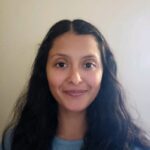
Isabel Rivera
UC Irvine
USA

Natalie DiProspero
UC Irvine
USA

Christy Hom
UC Irvine
USA
5.3.4. Synaptic, circuit, and behavioral studies of stress-induced memory formation
Chair: Victor Luna | Temple University, USA
The ability to form memories of stressful experiences is an evolutionary necessity, the impairments of which have been used to model symptoms of neuropsychiatric illnesses. Using classic and cutting-edge approaches, we will provide new insights into mechanisms underlying stress-induced memory formation in rodents. We will be emphasizing the impact of stress on social behaviors, reversal learning, spatial memory, and memory discrimination. These studies will be presented by early and mid-career faculty from diverse and underrepresented backgrounds. Nesha Burghardt will discuss the contribution of associative learning to stress-induced social avoidance behavior using a chronic social defeat stress paradigm (CSDS) in 129Sv/Ev mice. CSDS has been traditionally used to model depressive-like behavior. Using behavioral experiments based on classical fear conditioning protocols, she will present data that challenges this view and indicates that CSDS may be appropriate for studying the formation of fear memories involving a social cue. Using chemogenetic inhibition techniques, Christoph Anacker will discuss how inhibiting ventral CA1 (vCA1) hippocampal projections to the medial orbitofrontal cortex (mOFC) impairs reversal learning in the Digging Task and the Barnes Maze. He will also present data showing that inhibiting the same projections in mice exposed to CSDS increases stress susceptibility, while chemogenetic excitation confers resilience. His results will highlight a novel role for vCA1-mOFC projections in both reversal learning and stress resilience. Jason Snyder will discuss how experience-dependent plasticity arising from adult hippocampal neurogenesis (AHN) contributes to sex differences in a Spatial Water Maze task. He will present data showing that under stressful conditions AHN promotes temperature-related changes in search strategy in females, but promotes search strategy stability in males. Using electrophysiology, optogenetics, and photopharmacology, Victor Luna will discuss the synaptic mechanisms underlying contextual fear discrimination (CFD) in aged mice. He will show how the interplay between AHN, metabotropic glutamate receptor 2, and calcium-permeable AMPA receptors helps maintain CFD in aged mice but not in younger adults.

Nesha Burghardt
Hunter College
USA

Christoph Anacker
Columbia University
USA

Jason Snyder
University of British Columbia
Canada

Victor Luna
Temple University
USA
5.3.5. Environmental influences on adolescent learning and memory across species
Chair: Catherine Insel | Columbia University, USA
Adolescence is an evolutionarily conserved, transitional period of development during which individuals have myriad new experiences that impact learning and memory. These experiences can in turn shape subsequent behaviors, brain development, and future health and well-being. In this symposium, we present several lines of work - spanning multiple levels of analysis and species - that investigate how different types of environmental inputs, such as reward and threat, shape adolescents' learning and memory. Alexandra Cohen will present evidence that reward enhances memory through age-varying engagement of mesocorticolimbic systems and preliminary data on how reward influences neural memory representations across development in humans. Heidi Meyer will show that brief experiences of threat in adolescent mice lead to fear generalization on both short and long time scales and that this generalization can be mitigated by hippocampal-dependent safety conditioning during adolescence. Catherine Insel will discuss how reward generalization develops in humans during adolescence, demonstrating that young adolescents experience a knowledge-behavior gap that constrains adaptive inference during decision-making. Finally, Wan Chen Lin will examine the effects of food insecurity in adolescence on adult learning and decision making in rodents and present evidence that experience-dependent brain development in the juvenile adolescent period shapes adult decision making. Collectively, this symposium will view the foundations of learning and memory processes through a developmental lens and inform the mechanisms by which experiences influence behavior and brain function across adolescence.

Alexandra Cohen
Emory University
USA
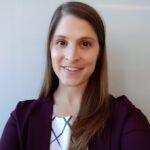
Heidi Meyer
Boston University
USA

Catherine Insel
Columbia University
USA

Wan Chen Lin
UC Berkeley
USA
5.3.6. The development and function of prefrontal learning and memory circuits
Chair: Laura DeNardo | UC Los Angeles, USA
The prefrontal cortex plays a key role in learning, memory, and cognition, allowing individuals to adaptively respond to a changing and uncertain environment. The prefrontal cortex matures later than other brain structures, undergoing complex structural and functional changes into early adulthood. While this extended maturation is likely necessary to support transitions through multiple developmental milestones, it opens a long window during which prefrontal circuit formation may be perturbed. Prefrontal disruption during development is a major risk factor for developing mental health disorders. But because of the physical complexity of these circuits, it has been challenging to understand their functions in development. Our labs are addressing these questions with cutting edge viral-genetic approaches for circuit mapping. We will describe new work that reveals how specific cell types within prefrontal circuits contribute to learning and memory in development and how they can be altered by early adversity. Laura DeNardo will discuss the developmental functions of prefrontal circuits underlying learned threat avoidance. Alberto Cruz-Martín will discuss prefrontal circuits controlling object recognition and the impacts of early life stress. Linda Wilbrecht will discuss how the mouse prefrontal cortex remodels during adolescence and how remodeling impacts go/no-go learning in the adolescent and adult brain. Shannon Gourley will discuss changes in frontocortical reward learning circuits following early life stress. Our panel will facilitate exciting discussions about the developmental functions of prefrontal learning and memory circuits. New ideas and research directions that emerge will enhance our understanding of how prefrontal disruptions occurring in key windows of development can produce dysfunctional behaviors later in life.

Laura DeNardo
UC Los Angeles
USA
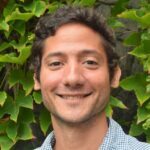
Alberto Cruz-Martín
Boston University
USA

Linda Wilbrecht
UC Berkeley
USA

Shannon Gourley
Emory University
USA
SUNDAY, APRIL 30, 2023
2:30 PM - 4:20 PM
Symposium Session 5.5
5.5.1. Object-space interactions in the medial temporal lobe
Chair: Vyash Puliyadi | Johns Hopkins University, USA
Neural representations of a complex environment include information about the space, the individual elements that exist within that space (such as objects), and the potential interactions between these features. The current symposium examines how these neural representations of objects and space are represented from single-cell recordings in animal models and humans. First, Kim Christian will discuss extracellular recordings from the dentate gyrus in mice, examining how this region modulates its firing to flexibly associate objects into a context while maintaining the sensitivity to discriminate between different contexts. Next, Vyash Puliyadi will discuss vectorial representations that tie objects to space in rats, and the computations that can connect these landmarks to an internal representation of space. This will be followed by Lukas Kunz, examining segregated and overlapping representations of objects and places within the hippocampus using extracellular recordings from humans and how they complement and interact with each other to facilitate memory encoding and retrieval in humans. Finally, Sachin Deshmukh will discuss the influence of objects and environmental complexity on spatial representations in the hippocampus and the entorhinal cortex of rats. Together, these four speakers will elucidate on how representations of space and object interact with each another and provide a cohesive understanding for the generation of contextual memory from animal models to human models.

Kimberly Christian
University of Pennsylvania
USA

Vyash Puliyadi
Johns Hopkins University
USA

Lukas Kunz
Columbia University
USA

Sachin Deshmukh
Shiv Nadar University
India
5.5.2. Investigating early medial temporal lobe neurodegeneration and biomarkers in preclinical Alzheimer's disease
Chair: Tammy Tran | Stanford University, USA
Neuropathological changes emerge decades prior to clinical manifestation in Alzheimer's disease, highlighting the importance of examining structural and biomarker changes in relationship to cognition in clinically unimpaired older adults who demonstrate evidence of preclinical AD. In examining this population, one open question is whether we can disentangle memory decline in aging compared to memory decline due to early preclinical AD processes. The symposium features speakers who are investigating the initial sites of tau accumulation (i.e., hippocampal and entorhinal cortex subregions) through high-resolution neuroimaging in relationship to biomarker burden (e.g., biofluids and PET imaging) and memory function. Across multiple studies and cohorts, we find evidence of both (1) early hippocampal and entorhinal changes and (2) memory decline in clinically unimpaired older adults who are biomarker positive. Furthermore, we also find evidence of distinct age-related memory changes compared to preclinical AD memory changes. First, Lok-Kin Yeung will speak about plasma pTau181 concentrations as a potential biomarker and the relationship between plasma pTau181 and anterolateral entorhinal cortex volume in older adults. Next, Hannah Baumeister will present on how a novel vertex-wise measurement of grey matter thickness in the hippocampal body and the entorhinal cortex relates to fluid AD biomarkers and cognition in a sample of clinically unimpaired older adults, individuals with subjective cognitive decline and patients with mild cognitive impairment from the DELCODE cohort. Tammy Tran will present on the independent effects of hippocampal subfield volumes and CSF pTau181 in predicting memory performance in cognitively unimpaired older adults with data from the Stanford Aging and Memory Study (SAMS) cohort. Lastly, Xi Chen will speak about the differential contributions of hippocampal atrophy and Tau PET in predicting memory function in cognitively unimpaired older adults from the Berkeley Aging Cohort Study.

Lok-Kin Yeung
Columbia University
USA

Hannah Baumeister
German Center for Neurodegenerative Diseases
Germany

Tammy Tran
Stanford University
USA

Xi Chen
UC Berkeley
USA
5.5.3. Episodic memory and the not-so-Default Mode Network
Chair: Zachariah Reagh | Washington University, St. Louis, USA
For many years, episodic memory was nearly synonymous with the hippocampus. Recently, the field has moved toward a more brain-wide perspective, with the roles of cortical networks being explored in empirical studies and emphasized in theoretical work. One such network is the Default Mode Network (DMN), a set of brain regions that shows elevated activity during rest periods and other internally-directed states. Some of these regions, including the temporal poles, parahippocampal gyrus, medial prefrontal cortex, and medial and lateral parietal areas, have long been recognized as playing a role in episodic memory. However, key questions remain unanswered. What are regions of the DMN doing to support memory? Does the information type dictate the involvement of these regions? Are they acting in a unitary fashion, or do they have particular parts to play? Should we reconsider the notion that these regions underlie a "default" cognitive state? Here, we explore these issues and synthesize four distinct lines of work into a broader discussion of the role of the DMN in episodic memory. Alex Barnett will show evidence for intrinsic functional and structural relationships among DMN regions, suggesting that the broader network can be considered as several subnetworks serving distinct cognitive domains. Maureen Ritchey will further expand on DMN subnetworks, presenting evidence for functional interactions among dissociable subnetworks supporting recollection. Zach Reagh will show that different subnetworks of the DMN serve different functional roles in representing and remembering elements of lifelike experiences. Finally, Janice Chen will show that activity in the DMN can reflect the higher-order properties of event networks and signal transitions between recollection of different movie-viewing episodes, speaking to representations of the structure of naturalistic events in memory. Together, we argue that the DMN is critical for encoding elements of the external world and transforming them into internal representations of events that are used to anchor episodic memories.

Alexander Barnett
University of Toronto
Canada

Maureen Ritchey
Boston College
USA

Zachariah Reagh
Washington University in St. Louis
USA

Janice Chen
Johns Hopkins University
USA
5.5.4. Cognitive and neural mechanisms of concept learning: bridging episodic and semantic memory systems
Chair: Anna Leshinskaya | UC Davis, USA
How does the human brain transform experiences into concepts? Our speakers bridge the gap between episodic and semantic memory by revealing 1) processes of inference and integration in the medial temporal areas hippocampus (HC) and entorhinal cortex (EC); 2) how these areas serve to build generalizable and structured knowledge; and 3) how these processes relate to semantic areas in neocortex. Using fMRI, Stephanie Theves shows that the hippocampus forms map-like representations of newly acquired concepts by encoding the distances between exemplars as well as the distance to the category boundary. Critically, these representations seem to emerge from a selective integration of behaviorally relevant feature dimensions. Finally, she investigates how these properties relate to further features of concept learning, such as prototype representations or updating of category boundaries. Robert Mok presents a neural-population version of the known cognitive model of concept learning, SUSTAIN, that captures concept and spatial representations in HC and EC. Here, a novel neural flocking learning rule serves to coordinate neural units that learn concept representations through recurrence in the HC formation. This offers a mechanistic view of concept learning as the coordination of cell assemblies through learning in HC. Anna Leshinskaya addresses the issue that HC and EC are not largely considered the long-term, eventual sites of semantic memory. She shows that integrative representations in EC form rapidly, but are mirrored in a semantic site in the middle temporal gyrus after sufficient exposure and delay. She demonstrates a unique role for EC in forming rapid integrative representations and serving as a bridge between episodic and semantic representations. Finally, Kazemi uses fMRI in toddlers to investigate early life memory representations. His work examines neural representations in response to auditory memory cues and can shed light on the developmental trajectory in knowledge formation. Altogether, our work offers a detailed characterization of the computational processes and neural pathways that integrate across experiences and give rise to structured and generalizable conceptual knowledge.

Stephanie Theves
Max Planck institute for Human Cognitive and Brain Sciences
Germany

Robert Mok
University of Cambridge
United Kingdom

Alireza Kazemi
UC Davis
USA

Anna Leshinskaya
UC Davis
USA
5.5.5. Ensemble codes for flexible learning in frontal-temporal circuits
Chair: Mohamady El-Gaby | University of Oxford, UK
Frontal-temporal circuits are critical drivers of flexible learning and cognitive map formation. Recent evidence suggests that such functions are best understood when considering how populations of neurons behave; emergent properties of neural populations are key for learning and retrieval. The proposed symposium aims to address these advances across species and circuits. Nick Frost will present studies of how prefrontal ensembles flexibly encode socio-emotional information via combinatorial coding, how these ensembles dynamically evolve with experience, and how they are altered in mouse models of neuropsychiatric disorders. Lisa Roux will discuss how closed-loop optogenetic manipulations combined with multi-electrode recordings have elucidated the role of sharp-wave ripples in the stabilization of the Hippocampal cognitive map during learning. Mohamady El-Gaby will present evidence for emergent ensemble coding of abstract rules and behavioural context in the mouse frontal cortex and hippocampus respectively, as well as a novel abstraction algorithm derived from these findings. Finally, Habiba Azab will present single-unit recordings from humans performing a novel grid-search task. She will explore how neurons in the prefrontal, hippocampal and entorhinal cortices support zero-shot learning and goal-directed navigation in dynamic contexts.

Nick Frost
UC San Francisco
USA

Lisa Roux
University of Bordeaux
France
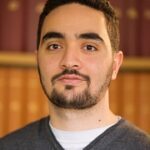
Mohamady El-Gaby
University of Oxford
United Kingdom

Habiba Azab
Baylor College of Medicine
USA
5.5.6. Insights into the behavioral and neural mechanisms underlying safety learning in rodents
Chair: Laura Vercammen | KU Leuven, Belgium
A crucial element of adaptive fear responding is the ability to suppress fear when it is no longer appropriate. A failure to downregulate fear in the absence of actual threat is a key characteristic of anxiety disorders. Although much is already known about the mechanisms underlying fear learning, the mechanisms at play in the learning of safety are much less clear. The current symposium will highlight state-of-the-art insights into safety learning in rodents, using a combination of different behavioral paradigms and neural measurements. Joanna Yau will present her work on the involvement of dopamine neurons in the ventral tegmental area during safety learning, using a conditioned inhibition approach and TH-Cre rats. Susan Sangha will focus on the roles of the infralimbic cortex, stress and sex on safety learning in rats. She will present a unique behavioral task that allows to examine stimulus discrimination alongside the regulation of fear and reward processing. Laura Vercammen will zoom in on the rewarding properties that safety signals obtain when they are presented contingent upon avoidance responses in rats, by using a two-way active avoidance task. Chris Cain will present his work on the safety signal hypothesis of goal-directed avoidance. He will discuss a novel safety signal devaluation protocol that can be used to differentiate between goal-directed and habitual avoidance.

Joanna Yau
University of New South Wales
Australia
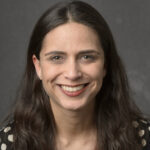
Susan Sangha
Indiana University
USA
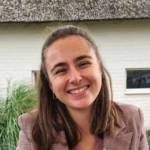
Laura Vercammen
KU Leuven
Belgium

Christopher Cain
The Nathan S. Kline Institute for Psychiatric Research
USA
Stay up to date on LEARNMEM™2023.
Sign up for our mailing list.
CONTACT US
Phone: 949-824-5193 | Email: memory@uci.edu